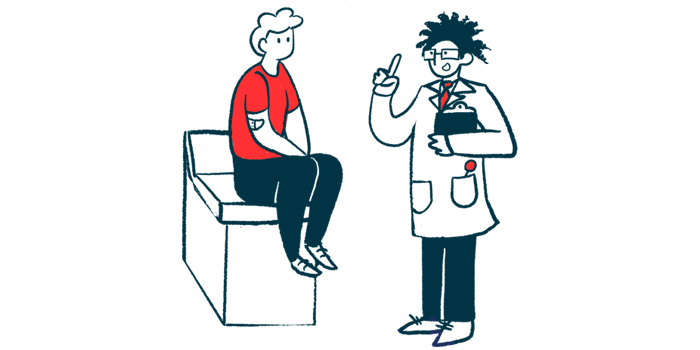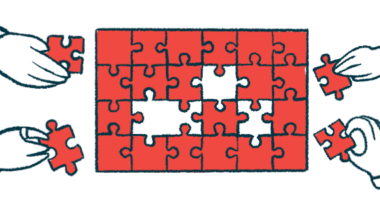AHP Patients Have Chronic Symptoms Between Attacks: Study
EXPLORE studied AHP patients with frequent attacks or on preventive treatment

People with acute hepatic porphyria (AHP) having recurrent attacks are burdened with chronic symptoms between those attacks, according to data from the natural history EXPLORE study.
High disease burden was also observed in patients having fewer porphyria attacks — less than three in the absence of preventive treatment for the past year.
The study, “EXPLORE B: A prospective, long-term natural history study of patients with acute hepatic porphyria with chronic symptoms,” was published in The Journal of Inherited Metabolic Disease.
The EXPLORE clinical trial (NCT02240784) was a natural history study of people with AHP who had recurrent attacks (three or more) in the year before enrolling or were receiving preventive treatment (hemin or gonadotropin-releasing hormone analogs).
The study was designed to characterize the disease’s course in the absence of treatment (natural history) and the current clinical management of AHP patients with recurrent attacks. It enrolled patients across Europe and the U.S.
At the start of the trial (baseline), researchers recorded the number of attacks, attack symptoms, and chronic symptoms between attacks. They also assessed patients’ quality of life, health status, and treatments routines.
In part A, patients were followed by telephone and in-person for up to a year, with data showing AHP was linked to a high disease burden and impaired quality of life.
An international team of researchers have reported baseline data from patients who enrolled in part B and were followed for up to three years. Both newly enrolled patients as well as patients from part A (followed for four years) were included. All assessments in part B were conducted by mail and confirmed by telephone without clinic visits.
Part B enrolled 136 patients (43 from part A and 93 new), most of whom (90%) had acute intermittent porphyria. They were divided into two groups, depending on attack frequency. The first group included 110 patients (mean age, 42) who had three or more attacks or were on preventive treatment in the year before enrolling. The second group included 26 patients (mean age, 36) who had less than three attacks and were not taking any preventive therapy in the same period..
In both groups, females represented more than 90% of the population and about 70% were white.
Of the 136 patients enrolled, only 21 (15%) completed the 36-month (three-year) follow-up. The majority left after a year (61%) and others after two years (27%). Patients were followed for a median duration of 14.6 months.
According to researchers, termination of the study by the sponsor was the main reason for premature withdrawal, followed by enrollment in the Phase 3 ENVISION trial (NCT03338816), or to receive Givlaari (givosiran) outside a clinical study.
Patients reported a median of three attacks over the previous year before joining the study. Those in the first group reported a median of four attacks, with 56% receiving hemin or gonadotropin-releasing hormone analogs.
Pain occurs during attacks
Researchers observed pain was reported by almost all patients during the attacks (90%), along with changes in mood and sleep (86%), digestive and bladder issues (87%), and nervous system malfunction (82%).
Patients often required hemin (80% in the first group, 69% in the second group) and pain medications (88% in the first group and 96% in the second group), including opioids.
Pain intensity was similar in both subgroups, as measured by the Brief Pain Inventory Short Form (BPI-SF), with scores ranging from 1 (mild pain) to 10 (severe pain). Patients in the first group had a mean worst pain BPI-SF score of 4.5 and those in the second group of 3.5.
More than half of the patients (72% in the first group, 85% in the second group) had chronic symptoms in the year before enrolling.
All had low quality of life at baseline, including those with fewer attacks, as assessed by the EuroQol visual analog scale (EQ-VAS) and the European Organisation for Research and Treatment of Cancer Quality-of-life Questionnaire Core 30 (EORTC QLQ-C30). Both are two standard scales to assess health-related quality of life.
At baseline, AHP was significantly associated with pain and discomfort, anxiety, depression, and impaired ability to conduct daily activities.
Hospital visits, employment status
AHP patients, including those with fewer attacks, reported frequent hospital visits, with a mean of 4.1 visits to the emergency department and 4.2 overnight hospital stays in the year before enrollment.
AHP was linked to a negative economic impact across all groups. Only 33% of the patient population (31% in the first group, 42% in the second group) were employed full-time at baseline. In the 12 months before joining the study, more than a third of employed patients (36%) missed workdays due to attacks and 32% required a caregiver.
This is in agreement with the outcomes of previous AHP patient interviews where “more than 50% of respondents reported that they had to stop working due to their disease,” the researchers wrote. The majority (77%) received no compensation from the government.
The findings from this natural history study show “patients with AHP with recurrent attacks, even those having fewer attacks, experience a high disease burden, as evidenced by chronic symptoms between attacks and impaired [quality of life].”







